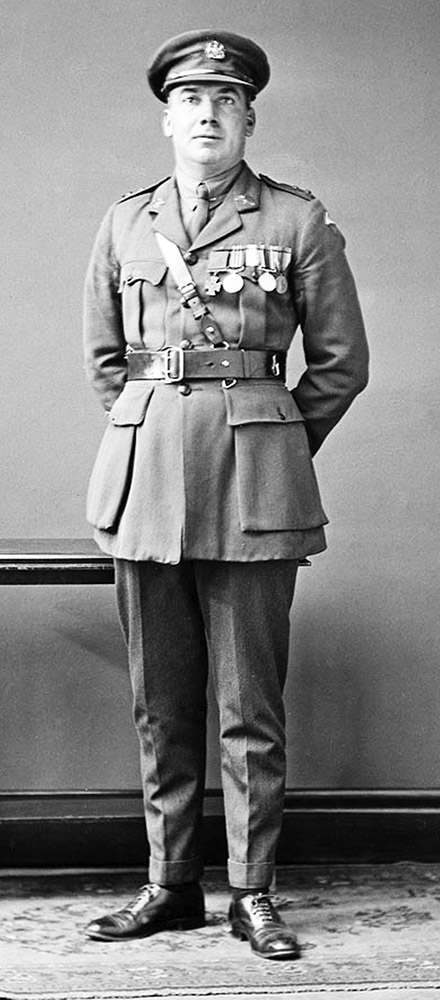
George Morby Ingram was born in Bendigo in 1889, but lived much of his life in Hastings. He died in 1961 and is buried in Frankston cemetery.
On 4 October 1918, the 24th Battalion took part in the attack that captured the Beaurevoir sector in France, and was, therefore, expecting to have a rest the following day when the unit was unexpectedly ordered to take part in another attack. The assault was to starts at 6.05am from the village of Remicourt, and lead to the capture of Montbrehain by the 21st and 24th Battalions with tanks to provide support. The action was to prove the final engagement for the Australian infantry during the war, and it was during this attack that Ingram was to earn the Victoria Cross; the 64th and final,Australian to do so during the First World War.
At the designated time, the two infantry battalions started the attack under the cover of an artillery barrage. The advance was heavily counter-attacked by German machine gun and artillery fire, but the Australians managed to continue despite the late arrival of the tanks. About 100 yards (91 metres) from the German trenches, the 24th Battalion’s B Company – in which Ingram was commanding a platoon – became the object of severe sniper and machine gun fire, halting the unit’s advance. Under the cover of a Lewis gun, Ingram dashed ahead of his men and led them against the German strong point. After a fierce fight, the platoon succeeded in capturing nine machine guns and killing all 42 Germans who had occupied the line; Ingram accounting for at least 18 of them himself.
Soon after, the company came under heavy fire from an old quarry occupied by more than 100 German soldiers who possessed as many as 40 machine guns. Severe casualties were sustained as they began to advance for attack, including the company commander who was seriously wounded. Taking command, Ingram rallied the men and rushed forward.
Jumping into the quarry, he charged the first post himself, shooting six German soldiers and capturing a machine gun. The German forces were soon overcome, and 30 troops subsequently surrendered.
While his men were clearing up the remaining German positions, Ingram scouted ahead in search of machine gun nests in the village. He soon located one positioned in a house, which had been firing through the cellar ventilator. Managing to enter the house, he shot the gunner through the ventilator. He fired several more shots into the cellar before rushing to the head of the cellar stairs. By thus cutting off any means of escape, a further 30 Germans were taken prisoner.
The battle for Montbrehain raged until 8pm that night, during which time the line had been linked up and consolidated. The casualties of the 24th Battalion had been so high that two companies of the 27th Battalion had to be attached for support; the 24th Battalion left the front line for the last time on 6 October.
The full citation for Ingram’s Victoria Cross appeared in a supplement to the London Gazette on 6 January 1919; it read:
War Office, 6th January, 1919.
His Majesty the KING has been graciously pleased to approve of the award of the Victoria Cross to the undermentioned Officers, Non-commissioned Officers and Men: —
Lt. George Morby Ingram, M.M., 24th Bn., A.I.F.
For most conspicuous bravery and initiative during the attack on Montbrehain, East of Peronne, on 5th October, 1918. When early in the advance his platoon was held up by a strong point, Lt. Ingram, without hesi-tation, dashed out and rushed the post at the head of his men, capturing nine machine guns and killing 42 enemy after stubborn resistance.
Later, when the company had suffered severe casualties from enemy posts, and many leaders had fallen, he at once took control of the situation, rallied his men under intense fire, and led them forward. He himself rushed the first post, shot six of the enemy, and captured a machine gun, thus overcoming serious resistance.
On two subsequent occasions he again displayed great dash and resource in the capture of enemy posts, inflicting many casualties and taking 62 prisoners.
Throughout the whole day he showed the most inspiring example of courage and leadership, and freely exposed himself regardless of danger.